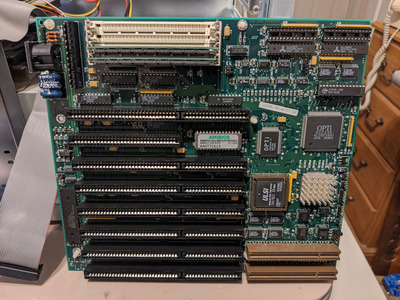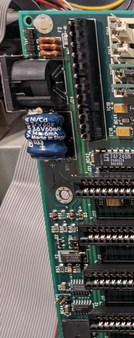Reply 20 of 33, by Deunan
CR2032 in place of the original NiCD is not that great of an idea, even if it seems to work. There's two problems with this setup:
1) A NiCD has 3.6V nominal voltage, and CR20xx is 3V (about 3.1 to maybe 3.2 when brand new but it drops over time). The mobo has a diode, usually a silicon one with forward drop of some 0.6V at low current, so that during PC uptime the 5V rail is what powers the RTC, not the battery. But that means RTC only sees 3V - 0.6V = ~2.4V or so when PC is turned off. This might not be enough for proper timekeeping and perhaps even CMOS NVRAM content preservation.
2) NiCD is charged, though with a small current, when PSU is running. Unless the mobo has a jumper for non-rechargeable battry option this will result in the CR-type being "charged", which it will not like, not long-term anyway. Might even spill and corrode stuff. Shouldn't catch on fire but you never know with lithium cells.
So a CR20xx will work, or seem to, but it wil not last for long and might even cause trouble. It would be preferable to at least mod the mobo to disable the charging (that's usualy done by removing one resistor), and in general a 3xAAA (or 3xAA) holder will last longer, can be put away from the mobo to prevent any possible spill causing damage, and the AA/AAA cells typically can endure small "charging" current simply due to their size. That's still abuse but usually not resulting in any issues. Might actually re-charge them a bit too.
And a minor issue, the older the mobo the more power-hungry the RTC clock circuit is. This is probably not an issue for this mobo but keep it in mind, the CR20xx will not last long at all on something like early 386 or 286.

